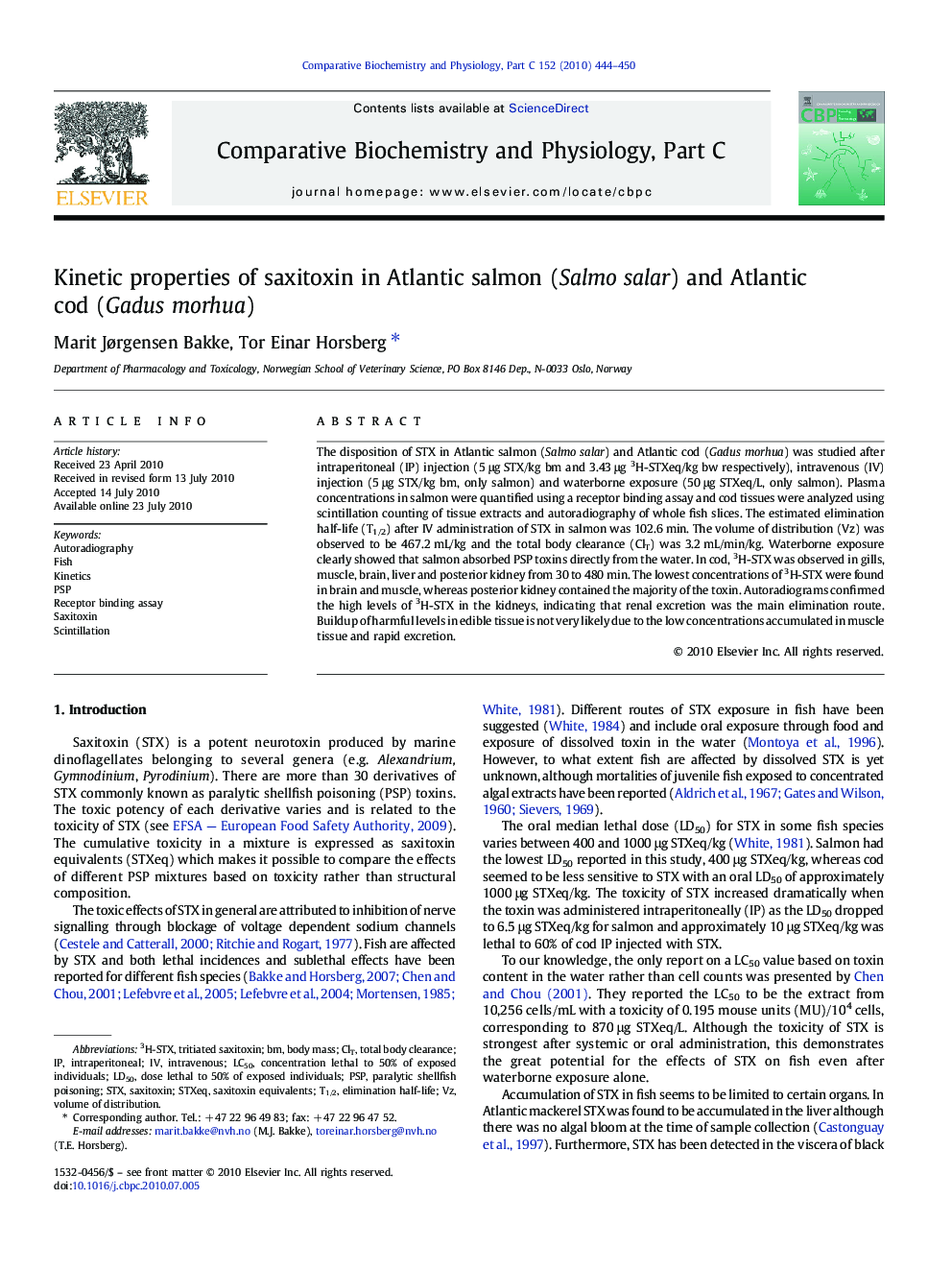| Article ID | Journal | Published Year | Pages | File Type |
|---|---|---|---|---|
| 1977444 | Comparative Biochemistry and Physiology Part C: Toxicology & Pharmacology | 2010 | 7 Pages |
The disposition of STX in Atlantic salmon (Salmo salar) and Atlantic cod (Gadus morhua) was studied after intraperitoneal (IP) injection (5 μg STX/kg bm and 3.43 μg 3H-STXeq/kg bw respectively), intravenous (IV) injection (5 μg STX/kg bm, only salmon) and waterborne exposure (50 μg STXeq/L, only salmon). Plasma concentrations in salmon were quantified using a receptor binding assay and cod tissues were analyzed using scintillation counting of tissue extracts and autoradiography of whole fish slices. The estimated elimination half-life (T1/2) after IV administration of STX in salmon was 102.6 min. The volume of distribution (Vz) was observed to be 467.2 mL/kg and the total body clearance (ClT) was 3.2 mL/min/kg. Waterborne exposure clearly showed that salmon absorbed PSP toxins directly from the water. In cod, 3H-STX was observed in gills, muscle, brain, liver and posterior kidney from 30 to 480 min. The lowest concentrations of 3H-STX were found in brain and muscle, whereas posterior kidney contained the majority of the toxin. Autoradiograms confirmed the high levels of 3H-STX in the kidneys, indicating that renal excretion was the main elimination route. Buildup of harmful levels in edible tissue is not very likely due to the low concentrations accumulated in muscle tissue and rapid excretion.
